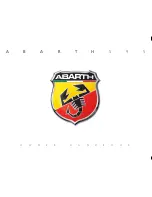
WAXING
Regular waxing is necessary to protect the paint on your car from the
elements. We recommend that you wash and wax the painted surface
once or twice a year.
When washing and waxing, park your vehicle in a shaded area out of
direct sunlight. Always wash your vehicle before applying wax.
•
Use a quality wax that does not contain abrasives.
•
Follow the manufacturer’s instructions to apply and remove the wax.
•
Apply a small amount of wax in a back-and-forth motion, not in
circles.
•
Do not allow wax to come in contact with any non-body (low-gloss
black) colored trim. The wax discolors or stains the parts over time,
such as:
•
Bumpers
•
Grained door handles
•
Side mouldings
•
Mirror housings
•
Windshield cowl area.
•
Do not apply wax to glass areas.
•
After waxing, your car’s paint should feel smooth, and be free of
streaks and smudges.
REPAIRING MINOR PAINT DAMAGE
Your authorized dealer has touch-up paint to match your vehicle’s color.
Take your color code (printed on a sticker in the driver’s door jamb) to
an authorized dealer to make sure you get the correct color.
•
Remove particles, such as bird droppings, tree sap, insect deposits, tar
spots, road salt and industrial fallout, before repairing paint chips.
•
Always read the instructions before using the products.
CLEANING THE ENGINE
Engines are more efficient when they are clean because grease and dirt
buildup keep the engine warmer than normal.
When washing:
•
Take care when using a power washer to clean the engine. The
high-pressure fluid could penetrate the sealed parts and cause damage.
•
Do not spray a hot engine with cold water to avoid cracking the
engine block or other engine components.
Vehicle Care
275
2014 MKX
(mkx)
Owners Guide gf, 1st Printing, November 2013
USA
(fus)
















































